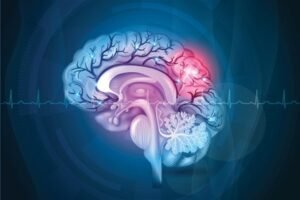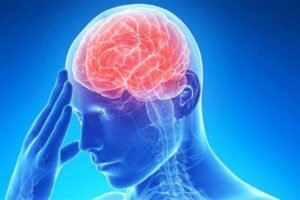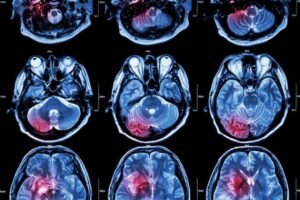Stroke
Introduction
In the current fast moving world, it are essential to prosperity concerns. One such worry that frequently strikes suddenly is a stroke. Figuring out this condition, its side effects, and preventive measures is significant for everybody. In this thorough aide, we dig into the complexities of strokes, offering experiences into its sorts, side effects, causes, analysis, treatment choices, and preventive techniques.

Define the Health Topic
A stroke happens when blood stream to the cerebrum is intruded on, prompting harm to synapses. This interfe
rence can happen because of a blockage in the veins or the crack of a vein.
Explain Its Relevance and Importance
Strokes are a main source of inability and mortality around the world. Understanding strokes is fundamental for early acknowledgment and brief treatment to limit its overwhelming impacts.
Types and Categories
Ischemic Stroke
An ischemic stroke happens when a blood coagulation impedes a vein giving blood to the brain.
Hemorrhagic Stroke
A hemorrhagic stroke happens when an incapacitated vein breaks, causing saturating the including frontal cortex tissue.
Side effects and Signs
Common Symptoms
- Unexpected deadness or shortcoming of the face, arm, or leg, particularly on one side of the body.
- Disarray or inconvenience talking or figuring out discourse.
- Trouble strolling, discombobulation, or loss of equilibrium and coordination.
- Extreme migraine with no known reason.
Uncommon Symptoms
- Unexpected beginning of serious dizziness or turning sensation.
- Loss of awareness or blacking out.
- Vision aggravations, like obscured or twofold vision.
Causes and Hazard Elements
Biological Factors
- Hypertension
- Elevated cholesterol levels
- Diabetes
- Coronary illness
- Past stroke or transient ischemic assault (TIA)
Environmental Factors
- Smoking
- Extreme liquor utilization
- Actual dormancy
- Less than stellar eating routine high in soaked fats and cholesterol
- Stoutness
Lifestyle Factors
- Stress
- Absence of rest
- Stationary way of life

Diagnosis and Tests
Physical Examination
A medical services supplier will lead an actual test to evaluate neurological capability, including strength, coordination, and reflexes.
Imaging Tests
- CT scan
- MRI
- Angiogram
- Ultrasound
CT Scan
A CT (figured tomography) check is an effortless imaging test that utilizes X-beams to make itemized cross-sectional pictures of the cerebrum. It is ordinarily utilized in the underlying evaluation of stroke patients to decide the sort and area of the stroke. By giving quick outcomes, CT checks assist medical care suppliers with pursuing opportune therapy choices.
X-ray (Attractive Reverberation Imaging)
X-beam is another imaging test used in the assurance of stroke. Dissimilar to CT filters, X-ray utilizes attractive fields and radio waves to produce point by point pictures of the mind.
It can give more exact data about the degree of cerebrum harm brought about by a stroke, assisting medical services suppliers with fitting therapy designs as needs be. Additionally, X-beam is huge for recognizing pretty much nothing or unnoticeable strokes that may not be evident on CT checks.

Angiogram
An angiogram, generally called cerebral angiography, is a decisive technique used to imagine the veins in the brain. During an angiogram, a distinction tone is implanted into the course framework, and X-bar pictures are taken to recognize any anomalies or blockages in the veins.
This test assists medical services suppliers with pinpointing the area and seriousness of blockages or irregularities adding to stroke risk. Angiograms are especially valuable for arranging careful intercessions or endovascular strategies to treat strokes.
Ultrasound
Ultrasound, likewise called sonography, is a harmless imaging strategy that utilizes high-recurrence sound waves to create pictures of the body’s inside structures, remembering the veins for the neck (carotid conduits) and cerebrum (transcranial Doppler ultrasound).
Ultrasound can assist with distinguishing blockages or anomalies in the veins that might build the gamble of stroke. It is a safe and practical indicative device, frequently utilized as an evaluating test for people in danger of stroke because of carotid vein illness or other vascular circumstances.
Treatment Options
- Ischemic Stroke Treatment
- Thrombolytic treatment (group busting drugs)
- Endovascular frameworks (mechanical group clearing)
Thrombolytic Treatment (Group Busting Drugs)
Thrombolytic treatment, regularly known as pack busting treatment, consolidates the relationship of meds called thrombolytics to isolate blood bunches that are causing an ischemic stroke.
These drugs work by enacting the body’s ordinary coagulation dissolving parts, reestablishing circulatory framework to the affected region of the mind.
Thrombolytic treatment is best when directed inside a couple of hours of the beginning of stroke side effects. Nonetheless, it conveys a gamble of draining difficulties and isn’t reasonable for all patients. Hence, its utilization requires cautious thought and close observing by medical services experts.
Endovascular Techniques (Mechanical Cluster Evacuation)
Endovascular strategies, generally called mechanical bunch departure or thrombectomy, are unimportantly prominent cautious systems used to dispense with blood groups from obstructed veins in the brain.
During the system, a catheter is embedded into a vein, ordinarily in the crotch, and directed to the site of the coagulation utilizing imaging innovation. When the catheter arrives at the coagulation, particular gadgets, like stent retrievers or goal catheters, are utilized to truly eliminate or separate the coagulation, reestablishing blood stream to the cerebrum.
Endovascular methodology are especially compelling for enormous or hard to-arrive at clumps and can fundamentally further develop results for patients with intense ischemic stroke when performed instantly by experienced neurointerventionalists.

Hemorrhagic Stroke Treatment
- Careful section
- Curl embolization
- Stereotactic radiosurgery
Careful Section
Cautious segment is a procedure used to treat hemorrhagic strokes achieved by the break of a weakened vein in the psyche, known as an aneurysm. During cautious segment, a neurosurgeon makes a passage direct in the skull toward get to the aneurysm.
During careful section, a neurosurgeon makes an entry point in the skull to get to the aneurysm. A little metal clasp is then positioned across the neck of the aneurysm to forestall further dying.
By confining the aneurysm from the ordinary blood stream, careful cut-out lessens the gamble of repetitive draining and permits the harmed mind tissue to mend. This methodology is normally proceeded as an open a medical procedure and may require an emergency clinic stay for recuperation.
Coil Embolization
Loop embolization, otherwise called endovascular winding or curl treatment, is a negligibly obtrusive methodology used to treat intracranial aneurysms, which are strange lumps in the veins of the mind that can crack and cause hemorrhagic strokes. During curl embolization, a catheter is embedded into a course, regularly in the crotch, and directed to the site of the aneurysm utilizing imaging innovation.
When the catheter arrives at the aneurysm, delicate platinum curls are embedded into the aneurysm sac to fill it, advancing blood clump arrangement and fixing off the aneurysm from the typical blood stream. This forestalls further draining and lessens the gamble of stroke. Loop embolization is less obtrusive than customary careful cut-out and frequently results in faster recuperation times for patients.
Stereotactic Radiosurgery
Stereotactic radiosurgery is an innocuous treatment decision for express kinds of frontal cortex headways and arteriovenous mutilations (AVMs) that could add to the bet of stroke. Notwithstanding what its name, stereotactic radiosurgery does exclude customary operation.
All things being equal, it utilizes profoundly engaged light emissions to unequivocally target and obliterate unusual tissue in the cerebrum while limiting harm to encompassing solid tissue. This designated approach makes stereotactic radiosurgery a compelling treatment for out of reach or inoperable cerebrum sores.
The method is regularly acted in a solitary meeting or a couple of meetings, contingent upon the size and area of the sore. Incidental effects are by and large gentle and may incorporate weakness, cerebral pain, and sickness, which normally resolve inside a couple of days.
Preventive Measures
Lifestyle Modifications
- Keep a sound weight
- Work-out consistently
- Eat a fair eating routine
- Limit liquor utilization
- Try not to smoke
Medical Interventions
- Control hypertension, diabetes, and elevated cholesterol
- Accept anticoagulants or antiplatelet drugs as endorsed
- Treat atrial fibrillation if present
Personal Stories or Case Studies
Emily’s Story: Overcoming Adversity
Emily, a dynamic lady in her 50s, experienced a stroke that left her briefly deadened on one side. Through serious restoration and unflinching assurance, she recovered versatility and autonomy.
Expert Insights
As indicated by Dr. Johnson, a nervous system specialist work in stroke care, “Early acknowledgment of stroke side effects and brief clinical consideration can fundamentally further develop results and lessen handicap.”
Conclusion
All in all, strokes are health related crises that require prompt consideration. By grasping the sorts, side effects, causes, and preventive measures, people can find proactive ways to lessen their endanger and possibly save lives.
Note:-
The information provided on this blog regarding medicnn price and side effects is solely based on data collected from public domains. I am not a doctor or a medical professional. While i strive to provide accurate and up to date information, I cannot guarantee the absolute accuracy or completeness of the data. It is always recommended to consultee with a qualified healthcare professional or doctor for personalized medical advice and information. the content on this blog should not be considered a substitute for professional provided at their own discretion and risk. I do not assume any responsibility for any consequences arising from the use of the information on this blog.
